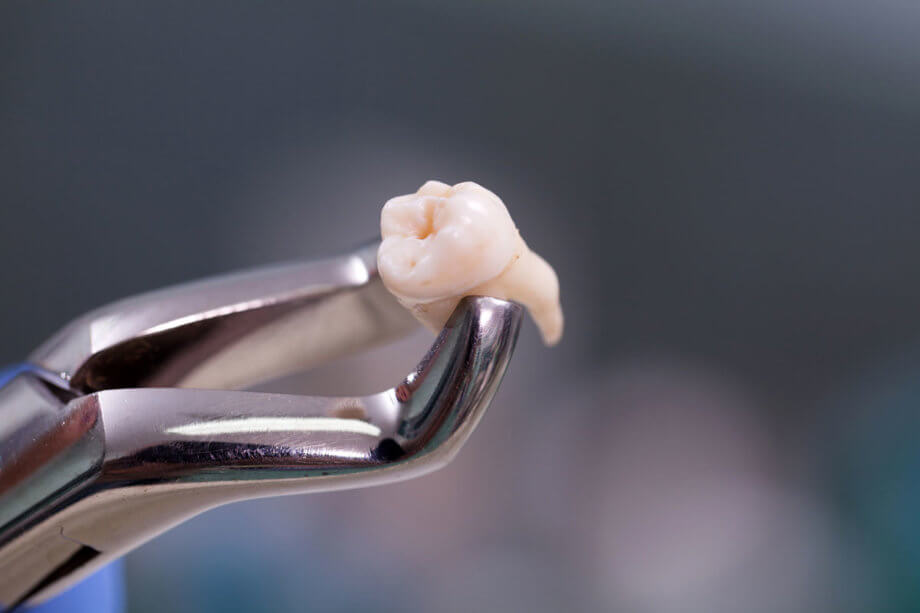A root canal is a dental procedure that is used to restore the health of a tooth. It is sometimes called root canal treatment or endodontic treatment. Endodontics is a specialization in the field of dentistry that focuses on diagnosis and treatment of conditions affecting the dental pulp, the soft tissue in the center of each tooth. Root canals are one of the most common endodontic procedures. You may need a root canal to treat an infected tooth, to prevent a tooth from developing an infection, or for other dental health reasons. How do you know if you need a root canal? Here are some of the most common symptoms that indicate you may be in need of endodontic treatment. What is a Root Canal? The root canal is the inner chamber of the tooth that contains soft tissue called dental pulp. Root canal treatment is the procedure that is named for the part of the tooth it addresses. Root canal treatment involves removal of the dental pulp from the inside of the tooth and filling the root canal with replacement material that fortifies the tooth and prevents infection. Signs You May Need a Root Canal The following signs and symptoms may indicate the need for root canal treatment: Severe Tooth Pain. If your tooth is infected, meaning there is a bacterial infection of the dental pulp, you’ll most likely feel severe pain in the tooth. This pain may be persistent or it may come and go. Either way, the …
How Long Does A Root Canal Take?
If you’ve been told you need a root canal, you probably have questions about the treatment. What is a root canal? How long does a root canal take? Are there other options? Can the endodontist save the tooth? Endodontists are dentists who specialize in saving teeth by treating the inside of a tooth. They perform root canal procedures to treat damaged or infected pulp, treat cracked or broken teeth, and perform procedures after accidents that injure teeth. What is a root canal? The term “root canal” comes from cleaning the canals inside a tooth’s root. Root canals and associated procedures remove the inflamed or infected pulp. Root canal treatment, or endodontic treatment, can save a tooth that may otherwise have to be extracted. Root canal treatment is needed when the inner, soft layer of the tooth, known as the pulp, becomes infected through decay or injury. The symptoms of a diseased pulp include: Severe toothache pain upon chewing or application of pressure Discoloration/darkening of the tooth Swelling and tenderness in the nearby gums A persistent or recurring bump on the gums Prolonged sensitivity to heat or cold temperatures (even after the hot or cold source has been removed) The pulp consists of nerves and blood vessels that help the tooth grow during development. Once fully mature, the tooth can survive without the pulp because it continues to be nourished by the tissues surrounding it. A root canal procedure involves removing the diseased pulp and then cleaning and sealing the inside …
How Do You Know if You Need a Root Canal?
Years ago, just the words “root canal” were enough to strike fear in patients. However, today the procedure is nearly pain-free. Thanks to advances in technology and modern root canal techniques, the procedure can be completed in less than an hour, allowing you to return to normal activities the same day. If your dentist has told you that you need a root canal, here’s an overview of what to expect. What is a root canal? A root canal is also known as endodontic treatment. Root canals are performed to prevent the extraction of teeth that are severely decayed, damaged, or infected. During a root canal, once the entire area surrounding the tooth is numbed, your endodontist will access the pulp (interior) of your tooth. The pulp of each tooth hosts nerves, connective tissues, and blood vessels. Your endodontist will remove this pulp, and clean out any infection in the canals of the tooth. The canals are then sealed with a safe, biocompatible material. After your root canal is completed, you’ll ultimately return to your general dentist to receive a crown, permanent filling, or have your current crown restored. It is important to note that once you have fully-developed adult teeth, you technically no longer need the pulp of your tooth. Root canals allow for the removal of the infected pulp so you can keep your tooth. Signs You May Need a Root Canal The only way to know for certain that you need a root canal is by seeing a …
How Long Does a Root Canal Last?
If you’ve never had a root canal treatment before, it’s likely that you have a number of questions about what to expect after the procedure. While the recovery from a root canal is nowhere near as lengthy as that of a tooth extraction, it may take some time before you feel “back to normal” again. Below, we address some of the most common questions patients have about what to expect after a root canal treatment. How long will I be numb? During your root canal treatment, your tooth and the area surrounding it will be numbed with local anesthetic, which can take several hours to wear off. Avoid eating foods that need to be chewed and hot beverages until the numbness has worn off. How soon can I eat and/or drink following the root canal procedure? It’s best to wait until the local anesthetic has worn off before eating, but if you are thirsty or hungry, you should wait at least 30 to 40 minutes after your treatment to ensure that the temporary filling has hardened. Is it okay to eat on the tooth with the root canal? It is best to try to avoid chewing on the tooth with the root canal and to chew on the opposite side of your mouth until your final restoration has been placed by your dentist. You should also avoid hard or sticky foods, as these have the potential to dislodge the temporary restoration. Will I be able to go back to work …
What to Expect After a Root Canal
If you’ve never had a root canal treatment before, it’s likely that you have a number of questions about what to expect after the procedure. While the recovery from a root canal is nowhere near as lengthy as that of a tooth extraction, it may take some time before you feel “back to normal” again. Below, we address some of the most common questions patients have about what to expect after a root canal treatment. How long will I be numb? During your root canal treatment, your tooth and the area surrounding it will be numbed with local anesthetic, which can take several hours to wear off. Avoid eating foods that need to be chewed and hot beverages until the numbness has worn off. How soon can I eat and/or drink following the root canal procedure? It’s best to wait until the local anesthetic has worn off before eating, but if you are thirsty or hungry, you should wait at least 30 to 40 minutes after your treatment to ensure that the temporary filling has hardened. Is it okay to eat on the tooth with the root canal? It is best to try to avoid chewing on the tooth with the root canal and to chew on the opposite side of your mouth until your final restoration has been placed by your dentist. You should also avoid hard or sticky foods, as these have the potential to dislodge the temporary restoration. Will I be able to go back to work …
What Exactly Does an Endodontist Do?
You may not have heard the term “endodontist” before being referred to our office by your general dentist. While most people are familiar with what orthodontists and oral surgeons do, endodontics is a lesser-known specialty within the field of dentistry. According to the American Association of Endodontists, fewer than three percent of dentists are endodontists. Here’s what endodontists do and how we can help restore your oral health. Specialists in Saving Teeth General dentists provide a wide range of treatments, but their primary focus is the visible portion of the tooth. In contrast, endodontists specialize in diagnosing and treating problems inside the tooth. After completing dental school, we receive two to three more years of education and training focusing on the dental pulp, root canals, and dental pain. We’re known in the field of dentistry as the specialists in saving teeth. Root canal procedures and other endodontic treatments allow us to save many teeth that have deep decay, extensive damage after dental trauma, or are otherwise compromised. Without such treatments, extraction would be needed. Saving your natural tooth is the ideal outcome. Diagnosing Tooth Pain Sometimes when you have a severe toothache, the cause is obvious. Other times, your general dentist may not be able to find the origin of your dental pain and refer you to an endodontist for a diagnosis. If your tooth pain is caused by a microscopic fracture or crack, it may not be apparent upon visual examination. An endodontic practice has state-of-the-art technology and surgical …
What to Eat After a Root Canal
While you may be focused on the root canal procedure itself, it’s important to take some steps in the days before your procedure to plan for aftercare. Having everything you need ready at home will make your recovery easier. One of the ways you can prepare is by stocking your pantry and refrigerator with soft foods that require little chewing to reduce stress on your treated tooth. Eating Guidelines After a Root CanalRecovery from a root canal is not anything like recovery from a tooth extraction or other oral surgery. You can return to work or school immediately after your procedure and there’s no need for a prolonged period of rest. That said, your tooth may be sensitive for a few days and you’ll need to avoid chewing with the treated tooth until your final restoration is placed. You can eat 30 to 45 minutes after a root canal, which is enough time to allow your temporary filling to fully harden, but it’s generally recommended that patients wait to eat until after the anesthetic has worn off to prevent you from biting your cheek or tongue. Be sure to brush and floss regularly to keep the area free of food debris and plaque. Foods to Eat After a Root CanalAs long as you avoid chewing or biting down with your treated tooth, you should be able to eat soft foods without any issues. This list of soft foods will help you put together well-rounded meals that won’t irritate your tooth: …
What Happens If You Don’t Get a Root Canal?
If you’ve been told that you need a root canal, it’s important not to delay your treatment. Opting not to get a root canal doesn’t mean your dental issue will go away—instead, you can expect that your situation will only get more complicated as time goes on and, ultimately, require more extensive treatment. Why Root Canals Are NeededAt the center of every tooth, under the enamel and dentin, is a soft tissue called the pulp. This pulp is rich in blood vessels, nerves, and connective tissues and it extends to the roots of the teeth. Sometimes, a deep cavity will reach the tooth’s pulp, causing it to become infected. Other times, the pulp becomes inflamed after a fracture or dental injury. Common signs that you might need a root canal include: Severe pain when biting down or chewing food Small, white bumps on the gums Sensitivity to hot and cold sensations Gums that are swollen or tender, or that appear darker Whether infected or inflamed, a root canal is needed to remove the pulp and restore health to your tooth. What Happens When You Don’t Get a Root CanalWhen the pulp in your tooth is compromised, it’s not an issue that will eventually resolve on its own. If your root canal is needed because the pulp is infected, it’s possible for the infection to spread to other parts of your body, which can be a life-threatening medical emergency. Inflamed pulp tissue may become infected if it’s exposed after a tooth …
When to See an Endodontist
People know endodontists as root canal specialists, but the field of endodontics is a specialty that focuses on the diagnosis and treatment of dental pain and saving natural teeth. Your local endodontist has in-depth training, advanced techniques, and state-of-the-art technologies to provide exceptional care in a variety of circumstances. Here are some situations in which you should choose to see an endodontist for your care. Dental PainWhen you experience sharp or throbbing tooth pain, it could be caused by tooth decay or a loose filling, or it may involve a crack or damage to the pulp tissue, in which case your dentist may refer you to an endodontist. Many causes of tooth pain are difficult to diagnose without the advanced equipment used by endodontists—even small cracks in a tooth can cause either constant throbbing pain or sharp pain when biting and chewing. Prolonged Tooth SensitivityIt’s not unusual to experience occasional tooth sensitivity. Some reasons for intermittent sensitivity include gum recession, minor tooth decay, or a loose dental filling. If, on the other hand, you experience severe sensitivity to hot or cold foods that lasts more than 30 seconds, it is a sign that the pulp has been damaged by physical trauma or deep decay. An endodontist can provide relief by performing root canal treatment. Root CanalsWhile many dentists provide root canal treatments, endodontists have a higher level of expertise. The average general dentist may do two root canals a week, while endodontists perform 25 or more. This experience gives us …
How Long Does a Root Canal Procedure Take?
There’s an age-old stigma associated with root canal treatment that suggests it is a long and painful experience, but with advancements in endodontic technology, a root canal is no more uncomfortable than any other dental procedure. Below, we dispel some of the myths surrounding root canal treatment and answer common patient questions. How long does a root canal treatment take? Will I need more than one appointment?Every patient is different, so the answer to this question depends on your unique circumstances. In most cases, one 60 to 90 minute treatment appointment is required to complete the root canal. In rare cases, the procedure may be split up into two separate appointments. What happens during a root canal?Here’s a step-by-step breakdown of what you can expect during your root canal procedure: You will discuss your symptoms and concerns with Dr. Lindemann. He will examine your tooth and take a digital x-ray, which allows us to view imaging on our computer immediately after the x-ray is taken. If Dr. Lindemann determines that you need a root canal, your tooth and the tissue surrounding it will be numbed using local anesthetic. This ensures that you won’t feel any pain during your treatment. A small opening is created through the crown of the tooth, allowing us to access the root canals and expose the pulp tissue. The damaged or infected pulp tissue is removed, then the canals are thoroughly cleaned. The canal is gently reshaped using a series of specialized endodontic instruments. A biocompatible …
How Much Does a Root Canal Cost?
This is not an easy question to answer. There is no set dollar amount that applies to root canal procedures across providers. Many different factors affect the cost of root canals and other dental care services.
Read More
Root Canal for Kids: Baby Tooth Root Canals
When people think of root canals, they generally think of adults or seniors with bad teeth. However, it is entirely possible for kids to need root canals too. Even though their baby teeth will fall out eventually, there is still a chance of needing a root canal before then. It is possible to avoid this problem with proper care if you know what you are doing. Here is a look at baby tooth root canals.
Read More
Can You Have Root Canal Treatment When You’re Pregnant?
Many people dread root canals, but they are an important treatment option for fixing painful, damage, or broken teeth. It is a fairly common procedure that is easy to schedule, complete, and recover from. However, there are specific steps that need to be taken. When you are pregnant and need a root canal, it can be difficult to decide if you should do it or not. Here is a look at what it is like to have a root canal treatment when you are pregnant.
Read More
Treatment for Cracked Teeth: What to Expect
Having a cracked tooth can be a dental emergency in some cases. However, any cracked tooth should be treated quickly. While it may seem like your teeth are nearly indestructible, it possible to crack a tooth in a variety of ways. If that happens, there are a few things that you need to do. Here is what to expect when you get treatment for cracked teeth.
Read More
What to Expect After Wisdom Tooth Extraction
If you have never had a tooth pulled, you might be nervous about having your wisdom teeth extracted. Wisdom tooth extraction can be somewhat complex, especially if the tooth has not fully erupted, but with modern dental techniques and pain management protocols, there is nothing to fear. Most people are back to normal in just a few days. Here’s what to expect after wisdom tooth extraction.
Read More
Are Root Canals Covered By Dental Insurance?
Depending on the tooth and the dentist, a root canal can cost upwards of $1,500 or more. If your dentist recommends that you have a root canal, you may find yourself surprised by the bill and wonder if you can use your dental insurance policy to pay for the treatment. Whether dental insurance will cover the root canal depends on a few factors, including your insurance policy. Here are some things that can impact whether your root canal will be covered by your dental insurance policy.
Read More
Top 5 Root Canal Questions and Answers
A root canal is a common yet often feared and misunderstood procedure for saving a tooth. A root canal becomes necessary when decay and infection reach the inside of a tooth. In modern dentistry, root canals are simple and easy, but many people have a lot of questions about this procedure. Here are the top 5 root canal questions and answers.
Read More
3 Myths About Root Canals
If you have a severely decayed or damaged tooth, a root canal is often the best way to save it. After thoroughly numbing the tooth, we will create a small opening from the crown down into the root chamber. After carefully cleaning out all damaged or infected tissue, we will then use a biocompatible material to seal the canals and a temporary filling will be placed. Then your family dentist will fit you with a temporary crown to wear while your final crown is created.
Read More
3 Signs You Need a Root Canal
Many people are afraid of root canals, yet this common procedure has been rendered virtually pain-free through modern dental techniques. In a root canal, the tooth roots and pulp are thoroughly cleaned, and the root chambers are sealed with a material that is biocompatible. If needed, a post may be inserted to support a crown, and restorative material may be used to supplement the remaining tooth structure. Root canals can save teeth that would otherwise need to be extracted. Endodontic services are needed when a tooth can be saved.
Read More



















